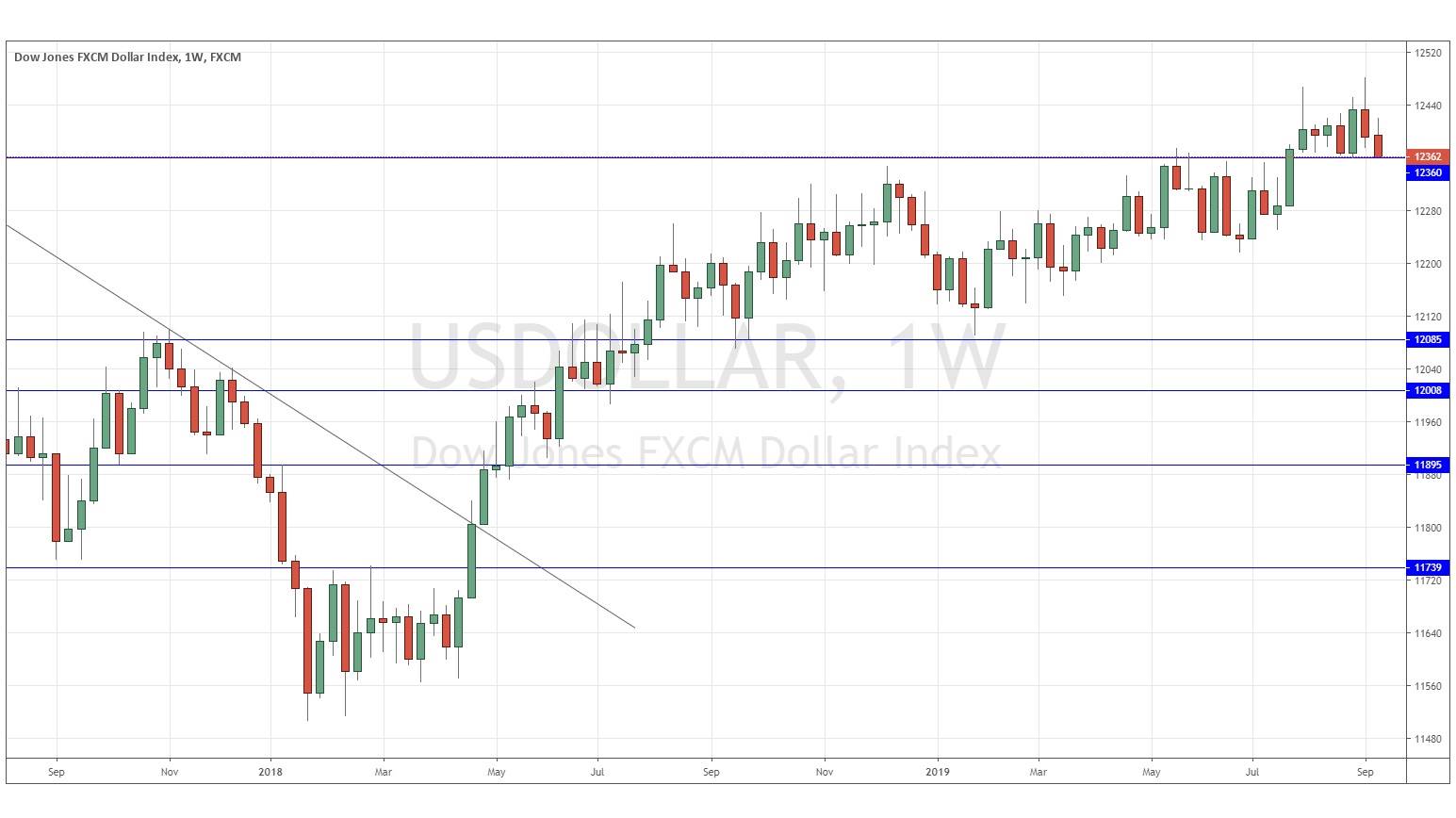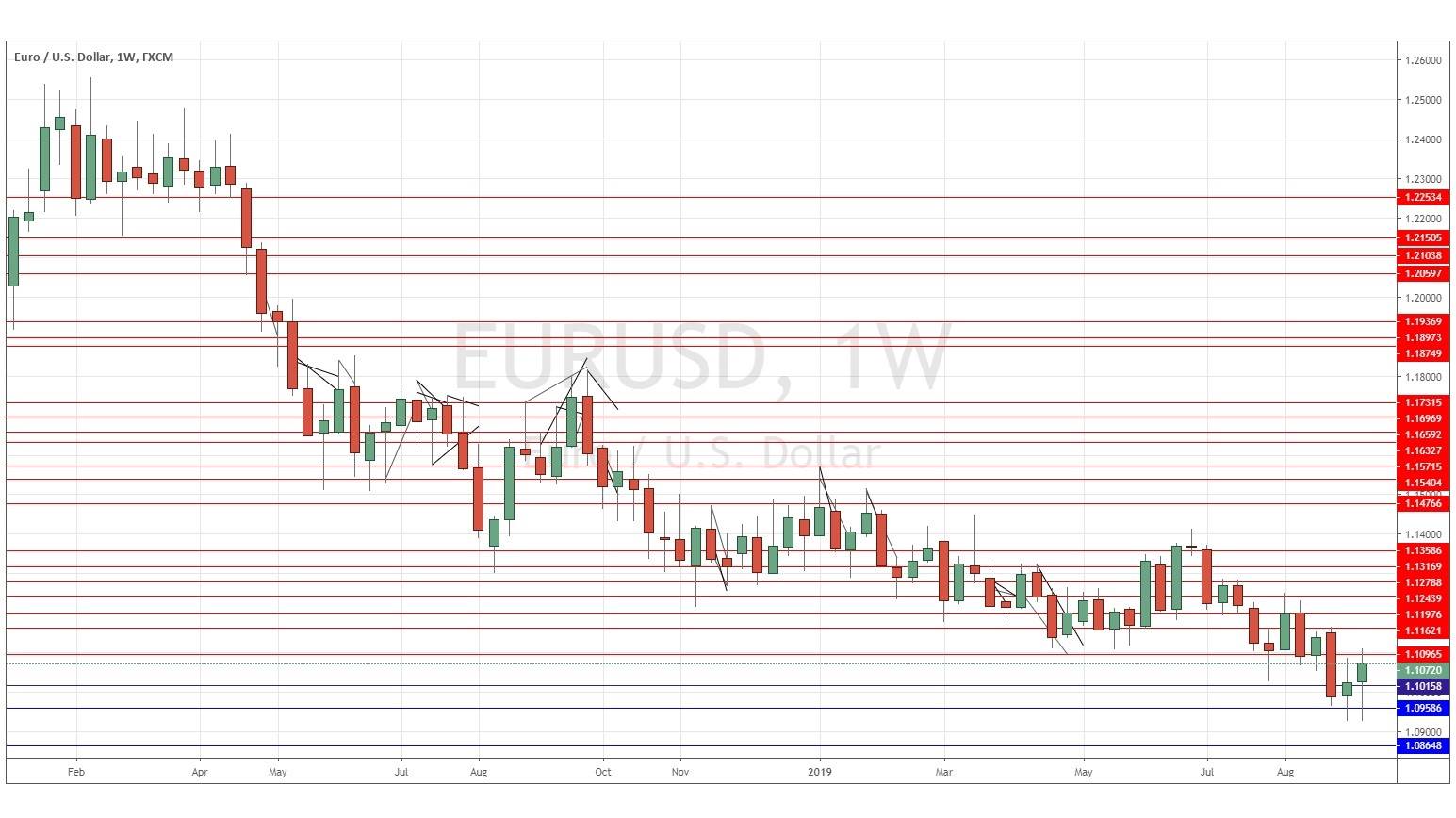The difference between success and failure in Forex trading is very likely to depend upon which currency pairs you choose to trade each week, and not on the exact trading methods you might use to determine trade entries and exits. Each week I am going to analyze fundamentals, sentiment and technical positions in order to determine which currency pairs are most likely to produce the easiest and most profitable trading opportunities over the next week. In some cases, it will be trading the trend. In other cases, it will be trading support and resistance levels during more ranging markets.
Big Picture 15th September 2019
In my previous piece last week, I forecast the best trade would be short of EUR/USD following a daily close below 1.1000. There was no such daily close during the week, which was just as well because EUR/USD rose over the week by 0.43%.
Last week’s Forex market saw the strongest rise in the relative value of the British Pound, and the strongest fall in the relative value of the Japanese Yen.
Last week’s market was dominated by U.S. Dollar and Japanese Yen weakness and some deep retracements or reversals in trending markets, leading to a confusing picture in the Forex market. The only constant is the depreciation in safe-haven assets such as precious metals, the Japanese Yen, and the Swiss Franc.
The truly notable market movement over the past week was the strong rise in the British Pound. This has been driven by recent British data showing a stronger economy but even more so by the increasing probability that a “no deal” Brexit will not happen at the end of October.
The Forex market is seeing only one long-term trend persisting right now, weakness in the Euro, but it is subject to deep pullbacks and it rose over the week despite the ECB’s reinstatement of an unlimited quantitative easing program.
There is a great deal of high impact news releases due compared to last week, with guidance due from the central banks of the U.S., Japan, the U.K. and Australia.
Fundamental Analysis & Market Sentiment
Fundamental analysis still sees the Federal Reserve as likely to cut rates by an additional two quarter-points over the next few months, although many economists believe only one cut is needed, or even no cuts at all.
The U.S. economy is still growing quite strongly, but there are increasing fears of a pending recession.
The British Pound has been boosted by a greater expectation that the British Parliament may be able to stop Brexit against the wishes of the government. As Parliament is also refusing to allow an election, they are forcing the Prime Minister into an impossible position and hanging him out to dry. It is hard to see how the Prime Minister can escape from this unless he has legal advice that Parliament’s instruction to him to request a Brexit delay cannot be lawfully enforced.
Stock markets have continued to advance, especially the U.S. market. The benchmark S&P 500 Index is close to its recent all-time high price. Sentiment is broadly risk-on.
Technical Analysis
U.S. Dollar Index
The weekly price chart below shows that last week the USD Index fell again, printing a normal-sized bearish candlestick which closed right at its bottom. This is a mildly bearish sign. However, the price is still up over both 3 months and over 6 months, indicating a bullish trend. The nearby support at 12360 also continues to hold up. Overall, the odds are very slightly in favour of a continuing Dollar advance, yet the greenback is likely to open weaker as the U.S. economy is seen as weaker and more prone to rate cuts..
EUR/USD
The past two weeks have seen a small recovery in this pair, with the last two candlesticks looking bullish. However, the price is clearly in a weak though persistent long-term bearish trend. It is not clear whether the price will fall further, but a bearish move resulting in a daily close below the psychological level at 1.1000 would trigger a change in probability which would see stronger downwards than upwards price movement.
Conclusion
This week I forecast the best trade will be short of EUR/USD following a daily close below 1.1000.



